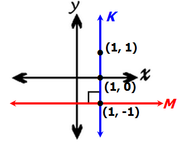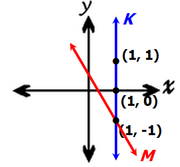Events & Promotions
|
|

GMAT Club Daily Prep
Thank you for using the timer - this advanced tool can estimate your performance and suggest more practice questions. We have subscribed you to Daily Prep Questions via email.
Customized
for You
Track
Your Progress
Practice
Pays
Not interested in getting valuable practice questions and articles delivered to your email? No problem, unsubscribe here.
- Nov 22
11:00 AM IST
-01:00 PM IST
Do RC/MSR passages scare you? e-GMAT is conducting a masterclass to help you learn – Learn effective reading strategies Tackle difficult RC & MSR with confidence Excel in timed test environment - Nov 23
11:00 AM IST
-01:00 PM IST
Attend this free GMAT Algebra Webinar and learn how to master the most challenging Inequalities and Absolute Value problems with ease. - Nov 25
10:00 AM EST
-11:00 AM EST
Prefer video-based learning? The Target Test Prep OnDemand course is a one-of-a-kind video masterclass featuring 400 hours of lecture-style teaching by Scott Woodbury-Stewart, founder of Target Test Prep and one of the most accomplished GMAT instructors.
Kudos
Bookmarks
E
Be sure to select an answer first to save it in the Error Log before revealing the correct answer (OA)!
Difficulty:
 35%
(medium)
35%
(medium)
Question Stats:
69% (01:47) correct 31%
(01:36)
wrong
31%
(01:36)
wrong  based on 1245
sessions
based on 1245
sessions
History
Date
Time
Result
Not Attempted Yet
In the xy-plane, line k passes through the point (1, 1) and line m passes through the point (1, -1). Are the lines k and m perpendicular to each other ?
(1) Lines k and m intersect at the point (1, -1)
(2) Line k intersects the x-axis at the point (1, 0)
(1) Lines k and m intersect at the point (1, -1)
(2) Line k intersects the x-axis at the point (1, 0)
Kudos
Bookmarks
gautamsubrahmanyam
For one line to be perpendicular to another, their slopes must be negative reciprocals of each other (if slope of one line is \(m\) than the slope of the line perpendicular to this line is \(-\frac{1}{m}\)). In other words, the two lines are perpendicular if and only the product of their slopes is \(-1\).
So basically the question is can we somehow calculate the slopes of these lines.
From stem we have one point for each line.
(1) gives us the second point of line \(k\), hence we can get the slope of this line, but we still know only one point of line \(m\). Not sufficient.
(2) again gives the second point of line \(k\), hence we can get the slope of this line, but we still know only one point of line \(m\). Not sufficient.
(1)+(2) we can derive the slope of line \(k\) but for line \(m\) we still have only one point, hence we can not calculate its slope. Not sufficient.
Answer: E.
For more on this issue please check Coordinate Geometry chapter of Math Book (link in my signature).
ALSO:
! |
Please post PS questions in the PS subforum: gmat-problem-solving-ps-140/ Please post DS questions in the DS subforum: gmat-data-sufficiency-ds-141/ No posting of PS/DS questions is allowed in the main Math forum. |
Originally posted by BrentGMATPrepNow on 27 Oct 2015, 12:20.
Last edited by BrentGMATPrepNow on 11 Feb 2021, 08:36, edited 3 times in total.
Last edited by BrentGMATPrepNow on 11 Feb 2021, 08:36, edited 3 times in total.
Kudos
Bookmarks
Timmimmit
Target question: Are lines K and m perpendicular to each other?
IMPORTANT: Since line K passes through the point (1, 1), statements 1 and 2 both have the same effect of "locking" line K into exactly one position. In fact, statements 1 and 2 essentially provide the exact same information. As such, it's either the case that each statement is sufficient (D) or each statement is not sufficient (E).
Since neither statement locks line M into any certain position, line M is free to be in lots of different positions, as long as it passes through the point (1, -1)
Okay, let's jump right to . . .
Statements 1 and 2 combined:
Here are two possible scenarios that satisfy statements 1 and 2.
Scenario a:

In this instance, lines M and K are perpendicular.
Scenario b:

In this instance, lines M and K are not perpendicular.
Since we cannot answer the target question with certainty, the combined statements are NOT SUFFICIENT
Answer = E
Aside: This concept of "locking in" shapes on Geometry DS questions is discussed in much greater detail in this free video: https://www.gmatprepnow.com/module/gmat- ... cy?id=1103
Cheers,
Brent















